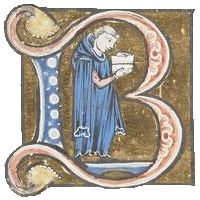Georgia Tech Projects
I completed a Masters of Science degree in CS from Georgia Tech in August 2021. Because many of the projects I worked on for classes are used every term, plagiarism rules prevent me from sharing the details of all of what I worked on in the program. But I can give broad descriptions some particular projects and classes!
CS 7643, Deep Learning
The fourth assignment for this class, written in Python using PyTorch, had two components. First, I implemented several basic units used in the Seq2Seq framework, including RNN and LSTM units and a single-layer Transformer encoder. Second, I trained a network built using these units and the Seq2Seq framework to translate German sentences to English.
CS 7642, Reinforcement Learning
The second assignment for this class, written in Python using Keras, focused on implementing and training a reinforcement learning agent to perform well on the “Lunar Lander” problem from OpenAI gym. I built an agent using the Deep-Q Learning approach, which trains an agent to estimate the Q function evaluating a state for continuous states where just using the normal update rule fails. I then experimented with parameterization to evaluate the impact of hyperparameters on training and overall performance.
CS 6200, Graduate Intro to Operating Systems
I learned C to write projects for this class, and felt like I’d jumped was into the deep end! For the second project I built a multi-threaded file server using a libcurl-based file handler and a caching system. The project focused on interprocess communication and managing multithreaded applications. Because I was learning the language alongside the assignment, this might have been the most stressful project I worked on - but also one of the most satistfying to see work!
CS 6476, Computer Vision
For the final project, I trained two neural net architectures to classify digits from the Stanford “Street View House Numbers” dataset and built a preprocessing pipeline to apply these models to classify digits in larger images. The first network leveraged a VGG-16 network pre-trained on the ImageNet dataset and swapped out the final two layers, the second was a small “homebrew” CNN. The pipeline used filters to increase contrast, then evaluated each maximally stable extremal region using one of the models to predict strings of digits in large images.
CS 6475, Computational Photography
For the final project of this class, I worked on estimating vanishing points in urban settings, which have neat boxy structures. I used a k-means algorithm to select from candidate intersections of edges found through the Hough Lines algorithm. Using these vanishing points, I simulated the blur seen in tilt-shift photography. In theory, this can create an “auto-tilt shift” algorithm for any urban photo.
